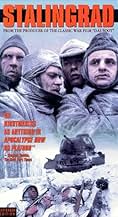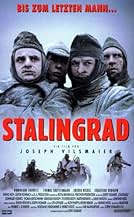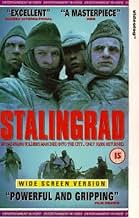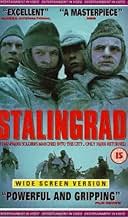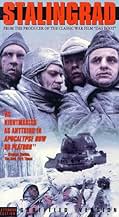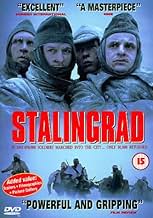The story follows a group of German soldiers, from their Italian R&R in the summer of 1942 to the frozen steppes of Soviet Russia and ending with the battle for Stalingrad.The story follows a group of German soldiers, from their Italian R&R in the summer of 1942 to the frozen steppes of Soviet Russia and ending with the battle for Stalingrad.The story follows a group of German soldiers, from their Italian R&R in the summer of 1942 to the frozen steppes of Soviet Russia and ending with the battle for Stalingrad.
- Awards
- 3 wins & 1 nomination
- Pfarrer Renner
- (as Eckhardt A. Wachholz)
Storyline
Did you know
- TriviaThe original screenplay was written by Christoph Fromm but the producers disagreed with his more realistic direction and had it rewritten. Consequently, Fromm took his name off the film.
- GoofsTowards the end of film a Ju52 drops a single supply parachute. When dropped out of the plane and falling towards ground, it is green, when they recover it on the ground it is white. (In reality the Luftwaffe was first using white parachutes until they realized it is too difficult to spot white parachutes on the snowy ground.)
- Quotes
Lt. Hans von Witzland: The best thing about the cold is...
[Witzland dies]
Fritz Reiser: [holding the body, he laughs] You don't have to worry about sunburn. Ever been to the desert? You'd hate it. It's so hot, you're always sweating. You think you're melting, like butter. The desert is shit. Except for the stars. They're so close, you know?
[dies]
- ConnectionsFeatured in The 100 Greatest War Films (2005)
It isn't well understood, but the Eastern Front was used as a threat and as a punishment by Hitler. Even Schindler in the film Schindler's List used that threat on the train station in order to get his bookkeeper released from the death train.
There are two scenes that will haunt be for the rest of my life:
The scene where Lt. Hans von Witzland, played by a very young and splendid Thomas Kretschmann, and the Russian actress Dana Vavrova who plays Irina.
That scene is so emotionally charged that it left both actors physically shaking. I can't imagine having to repeat that scene more than once. To have to hold that raw, totally exposed feeling/expression and body language while lights are adjusted and a different angle is used must have been physically and mentally exhausting for these two brilliant actors. They perform a brutal Dance Macabre that is both horrific and fascinating.
This scene is no longer about an enemy and the one who has been conquered. It is about a young man desperate to find one moment of humanity on an endless nightmare and a young woman who hates him and herself and yet can not resolve her situation. That he is a German and she is Russian is not as important as that they are both souls in torment with no way out.
The human agony of that scene is superior to anything I have seen in over 60 years of watching movies.
The other is the final scene between Dominique Horwitz and Kretschmann as Fritz and Hans clinging to each other overwhelmed and miniaturized by the vast Russian winter.
That final scene reminds me of Napoleon's death march from Moscow in 1812. The results were to same. No enemy can come marching into Russia and live to march out again.
I began watching this film firmly committed to cheering the Russians and hating the Germans.
By the end I was crying for them all.
That is the message of this fine film. War is a waste...a waste of human lives, of property, and of moral and religious focus.
This is a classic anti-war film not unlike All Quiet on the Western Front or What Price Glory.
- countryway_48864
- Jan 8, 2006
- Permalink
Details
Box office
- Budget
- DEM 20,000,000 (estimated)
- Gross US & Canada
- $152,972
- Opening weekend US & Canada
- $10,882
- May 29, 1995
- Gross worldwide
- $152,972
- Runtime2 hours 14 minutes
- Sound mix
- Aspect ratio
- 1.85 : 1
Contribute to this page


